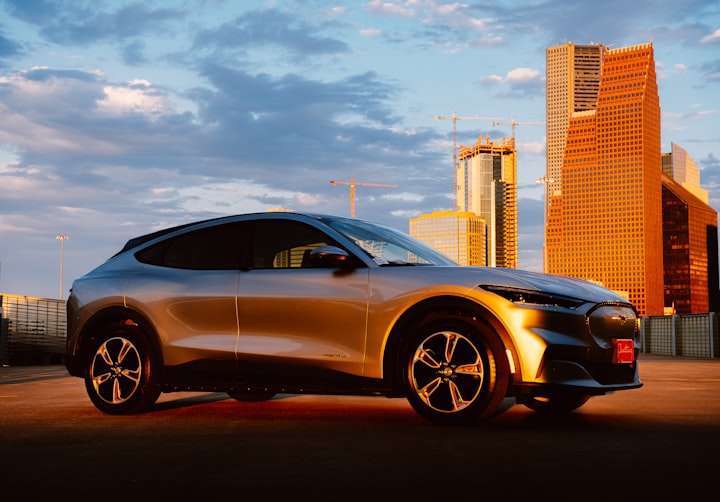The 2023 Z Proves Nissan Still Knows How To Make Great Sports Cars
TRANSPORTATION

Right up until Nissan unveiled the Z Proto “concept” in September 2020, there was a great deal of uncertainty among enthusiasts and fans of the Z about whether a new model would ever arrive. Nissan has been suffering financially for several years with falling sales and a variety of corporate political issues. Despite a 50 year heritage, a new Z was not a lock for approval. Despite all that, we have now driven the new 7th-generation Z and we can proclaim that it is excellent.
Unlike all the prior generations of Z sold outside of Japan, this edition has no numbers associated with the name, it’s simply Z. Japanese customers will of course still get the Fairlady Z badge on their cars. Like the last couple of generations, this Z continues to be offered with only two seats, no nonsense with tiny, completely unusable back seats.

While the new Z retains the same basic architecture used for the 370Z since 2008, it has been thoroughly refined. There’s a double-wishbone suspension setup at the front corners and a multi-link layout at the rear and of course drive torque only goes to the rear wheels as should be the case in all proper sports cars. The brake sizes are also essentially the same as before as is the 100.4-inch wheelbase.

The biggest change is the design which now harkens back to the first generation 1970s Z more than any other variant in the past four decades. This isn’t a retro design by any means and looks thoroughly fresh. But the proportions have the classic long-hood, cab-rearward look. Compared to the 370Z, the effect is enhanced by a longer nose that is part of a five-inch longer body.The LED headlights have a pair of arced signature lights that echo the look of the refraction in the light covers of the 1970s era Japan-market 240ZG and give this new Z countenance distinct from anything else currently available. At the rear, the taillamps subtly incorporate the oval look of the lamps on the 1990s-era 300ZX. For those that know the history of the Z, these cues are a nice touch without beating you over the head with retro. Compared to its most direct competitor, the Toyota Supra, the Z has a cleaner, more refined look, devoid of any extraneous details like fake vents.
The cockpit of the Z is a huge step up from the 370Z. The materials feel significantly more premium than before. The example I drove had a two-tone interior with black and a blue that matches the gorgeous Serian Blue exterior. The cabin is also offered with red/black or all black. The limited edition Z Proto Speck gets yellow interior accents to go with the yellow exterior first seen on the Z Proto concept in 2020.

Directly in front of the driver is a 12.3-inch digital instrument cluster display with bright colors and lots of contrast. Off to the left is an eight-inch infotainment touchscreen that like other recent Nissans is a much better quality display than dim, low contrast screens that Nissan has used for years. The infotainment interface is however, the same one that Nissan has been using for the better part of a decade and it certainly looks dated compared to most other recent systems. It’s past time for a redesign and Nissan is expected to follow alliance partner Renault in adopting Android Automotive although no timing has been given.
However, the Z isn’t about staring at the center screen, it’s all about driving as it always has been. In this regard, the Z shines. Like all Zs since the 300ZX debuted in 1984, this one is powered by a V6 engine, in this case downsized from 3.7 to 3.0-liters. This is the same twin-turbocharged unit found in the Infiniti Q50 Red Sport 400. With 400-hp and 350 lb-ft of torque, this is a substantial improvement over the 332-hp and 270 lb-ft of the old engine. In particular, the twin-turbo hits its torque peak at 1,600 rpm while the naturally aspirated unit had to spin to 5,200 for maximum torque. The Z has slightly more power and slightly less torque than the Supra.
In a very pleasant surprise, Nissan is offering the Z with a choice of either a six-speed manual or a nine-speed automatic transmission. I got to spend my drive time with the manual gearbox and while the automatic transmission is probably slightly quicker to accelerate, the stick remains remarkably engaging. It’s not necessarily the slickest shifting gearbox in the world, but at least Nissan is offering it from day one, rather than forcing three-pedal enthusiasts to wait as Toyota has done.
About the Creator
ALIN & BOBO INDUSTRY
hy we are tho guys, and our biggest love is for cars so we create this profil dedicated only for cars <3






Comments
There are no comments for this story
Be the first to respond and start the conversation.